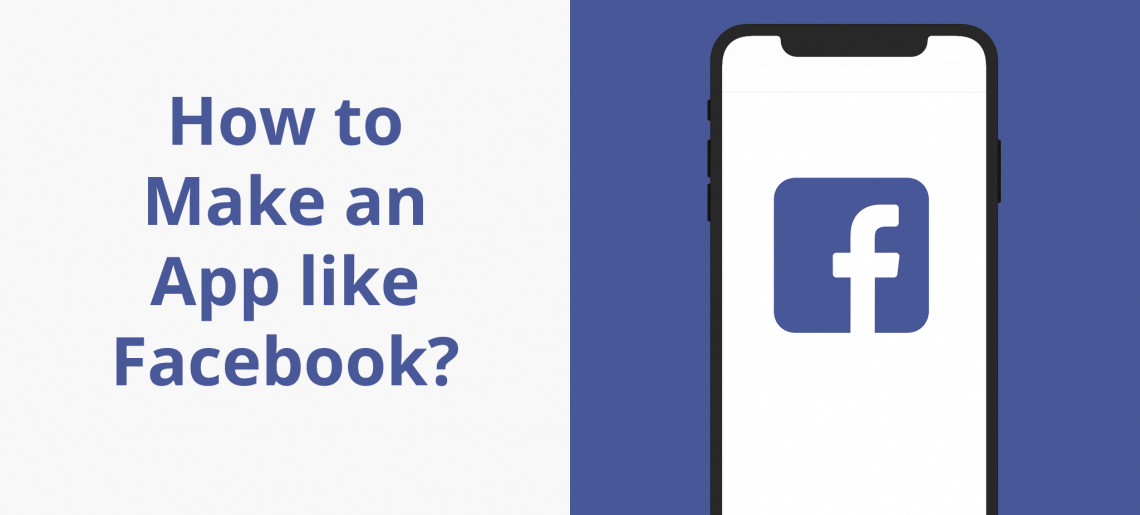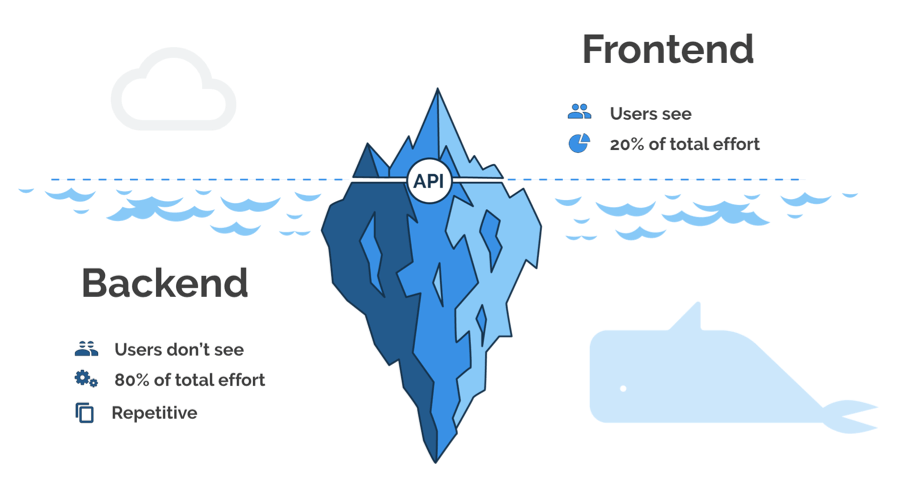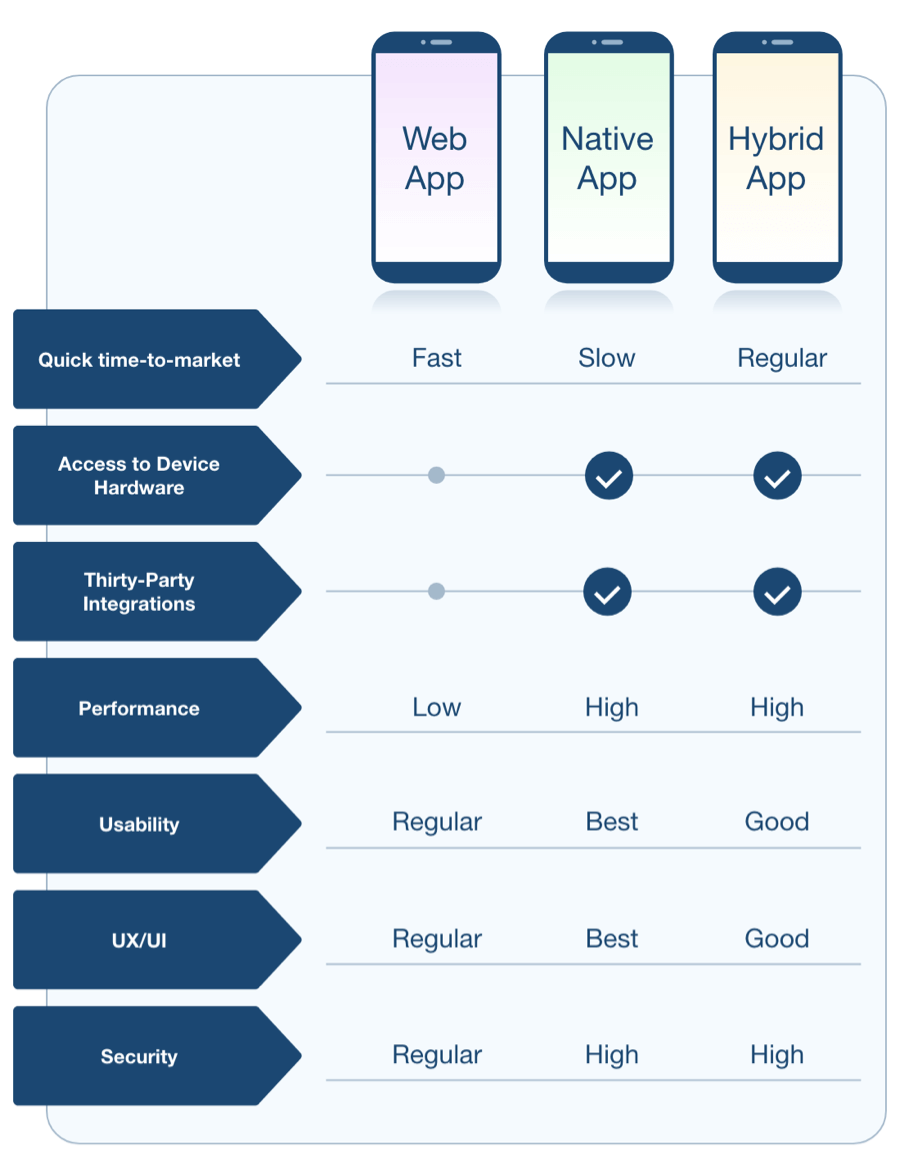How to make an app like Facebook?

Social networks have been hot over the last decade and become an integral part of everyone’s life. Perhaps you want to create the next globally-acclaimed social network?
In that case, you can leverage the success of Facebook by building a Facebook clone. With around 2.89 billion monthly active users, Facebook is the most successful social network right now.
So, how to develop an app like Facebook?
This article reveals the ten vital lessons that I learned from a decade of experience in managing a company that develops mobile apps. Following my lead will save you lots of hassles and money in your quest to create a social network app that works like Facebook.
I will show you the crucial details you need to bring your app idea to reality. You don’t have to pay a dime, just dedicate about 10 minutes to read this article. The tips that I provide here will save you a fortune.
Are you ready to create an app like Facebook? Continue reading this step-by-step guide.
Contents
- 1 Facebook Overview
- 2 How to make an app like Facebook?
- 3 1. Do not start with coding right away
- 4 2. List your High-Level Goals
- 5 3. Create a list of the Must-Have Features
- 6 4. Select Either an Android or iOS App
- 7 5. Wireframe, mockup, and prototype your app
- 8 6. Create the backend of your app
- 9 7. Code your app frontend
- 10 8. Design the App’s Landing Page
- 11 9. Establish an App Analytics Dashboard
- 12 10. Publish your app
- 13 Conclusion
- 14 What is Facebook?
- 15 How to make an app like Facebook?
- 16 What are the best backend providers for a mobile app?
Facebook Overview
Before we commence with the technical stuff, let’s take some time to review the Facebook platform.
Facebook is a social media service that allows users to connect, make posts, write comments and share their likes and dislikes online. This social networking platform was created by Harvard students in 2004 for their campus use only.
However, it became popular among all US college campuses because of its appealing features. Over the next few years, Facebook users spread beyond campuses to different nations around the world and reached one billion registered users in 2012. This achievement made Facebook the largest social media platform.
Facebook continues to grow exponentially as they add novel features to the platform including the Facebook mobile app. According to Statista, the data from the second quarter of 2021 shows more than 2.91 billion active users on the Facebook platform every single month.
The same report also reveals that more than 3.51 billion people actively use Facebook, FB Messenger, WhatsApp, or Instagram every month.
Moreover, Apptopia stats show that Facebook is the 3rd most downloaded application of 2020. Their statistics also claim that the Facebook app was downloaded around 540 million times globally in 2020.
Keep reading to discover how to make a software like Facebook.
How to Use Facebook
All Facebook users must first register on the platform with their email address or phone number. After that, the user proceeds tocreate a profile, add friends, and start interacting with other users and their content on the platform.
Facebook users can also choose to join public groups, which were created around various topics ranging from schools, workplaces, hobbies, and so on.
Facebook users can create posts to update their status. They can also create pages, groups, and send messages to other users on the Facebook platform. Besides messaging, users can interact with various applications such as games and other apps integrated with the Facebook platform.
Facebook Mobile
As mentioned earlier, Facebook created a mobile app to make the platform easily accessible to users of mobile devices. The app version of the social media network was first launched on iOS in 2008, and Android in 2010.
Besides, Facebook created other apps for managing different features within the social media network, like Facebook Messenger for messaging, voice, and video calls.
A recent report put the userbase of Facebook Messenger at 1.3 billion active users per month. With the many apps Facebook has to its credit and massive monthly downloads, the company has become one of the leading app publishers in the world.
We have successfully given an overview of the Facebook platform. Let’s now delve into the intricacies of creating a mobile app like Facebook. The ten steps go below.
Keep reading to learn how to make an Android app like Facebook.
How to make an app like Facebook?
Here are some useful tips to create a social media site.
1. Do not start with coding right away
This is an important lesson that is going to save you a fortune. Do not start your project with coding! The reason is simple, coding is the most expensive aspect of the project.
The cost of hiring top-notch programmers is not cheap. You will be spending about $25 per hour for offshore talents and about $200 an hour if you choose to use programmers from Silicon Valley.
Given the massive financial resources you’ll be committing to coding your app, you should approach the programming task with great precision. Do your homework, know the precise design you want, the feature you need, create sketches, and try to get feedback from potential users.
Social websites are expensive to develop. So, follow this guide to create a social networking website, save valuable money on your project, and avoid the pitfall of creating an app that nobody wants.
2. List your High-Level Goals
Want to create something like Facebook? The first thing is to list your high-level goals.
Do you know around 3.48 million Android apps are on Google Play Store, according to the Q1 2021 survey of Statista?
With that huge number of competing apps in the marketplace, your mobile application needs to stand out from the crowd to succeed. So, writing down your high-level objective is critical for an app in the competitive social media niche.
If you do not have clear-cut goals, your app will just end up as just a number in the app store. The best approach will be to use the Load Startup Method, apply the Business Model Canvas, and buy the Start Owners Manual.
Read this article to learn more.
How to make an app? 13 steps for a successful application
3. Create a list of the Must-Have Features
The must-have features are the bare minimum features that you need to launch your Facebook clone app. For instance, a typical social media app has the following features:
The User Interface: Focus on creating a simple but elegant user interface that enhances usability. The platform user should be able to register and use the app without hassles.
Push Notifications: Adding a feature that enables real-time notifications for the features that the user selects can make a huge difference.
User Profile: The ability to make extensive modifications to the profile from the app interface can attract more users and retain existing ones. The pleasant experience of the app users is vital to keeping them on your app platform.
News Feed: The news feed feature allows the user to receive the latest news updates. You should also consider coding private, group, and public chat options.
File Sharing Feature: These days, social media apps integrate image, audio, and video content sharing features. Emojis and stickers are also becoming common, so your Facebook-like app should integrate them as well.
Customization: Make it easy for your app users to add, remove, or edit friends, connections, and groups.
Messaging Feature: WhatsApp and Facebook Messenger have acquired a massive userbase, indicating that people have a deep interest in Instant messaging. So, adding instant messaging features to your social media platform will increase its popularity. These days, most IM apps also include file sharing features.
Please refer to the tutorial How to create an instant messaging app to learn how easy it is to set up a real-time messaging feature using Back4App.
Storytelling: One of the recent evolution in social media is storytelling. The fact that more and more platforms are integrating this feature means its engagement level is very high. Storytelling allows users to engage their audience by keeping them informed about important moments in their life. The users can also start a conversation based on comments on stories.
Other must-have features your Facebook clone app must have include
- User management
- Web portal for app management
- Security
- In-App communication
- Geolocation
- Datasource Integration
- Payment system integration
4. Select Either an Android or iOS App
At this point, you need to select an operating system for your app. There is an option to use hybrid platforms to develop on both Android and iOS simultaneously.
This approach makes the MVP more complicated, delays users’ understanding of the platform, and is also cost-intensive.
On the other hand, focusing on one platform is simpler, saves money, and is easier for ongoing feature management.
StatCounter reveals that Android has a 72.72% share of mobile users, while iOS covers the remaining 26.46%, according to a recent survey.
Android is the best choice if you are targeting a broad user base. The platform has excellent coverage in Asia, South America, and other parts of the world.
On the other hand, iOS users show higher engagement and have a higher earning power. So, iOS is great if you are targeting such an audience.
Keep reading to learn how to create a website like Facebook.
5. Wireframe, mockup, and prototype your app
It is essential to note that wireframes, mockups, and prototypes are not the same.
- The Wireframe of your app is the sketch of what you want the app to look like.
- The mock-up contains colors and animated pictures.
- The prototype will allow user interactions such as pressing the buttons and interacting with the app functions.
This step is vital, it is going to help you save time and money on your app development project. Moreover, it affords you a learning experience; you can fine-tune functions and features, thereby enhancing the market validation.
Here are a few reasons why you should follow this approach:
- It’s a fun experience, you love it.
- Changing the design is faster than changing code.
- Designing is more cost-efficient than developing.
- You can DIY with the design approach.
Social Network Templates
Using pre-built templates will also save you time, avoid reinventing the wheel, and coding boilerplate tasks.
6. Create the backend of your app
Finally, it’s time to start coding the app.
Do you know that mobile apps are like floating icebergs? The part that you see is significantly smaller than the one submerged under the water.
In a mobile app, the user can see the part called the frontend, but the backend is hidden away from the platform users.
The vast majority of the app development tasks will be on the backend. The backend will handle most of the vital tasks such as generating the APIs, business rules, storing and retrieving data, and many more.
There are two major options for creating your application backend. You can use a Backend as a Service (BaaS), or code your backend from scratch.
BaaS – Backend as a Service Platforms
Opting for the Backend as a Service Platform is an excellent way to get your backend up and running in good time. This type of service automates some essential tasks such as authentication, social login, data backup, among many others. Some of the major advantages of using a BaaS are:
- Increased Speed: Expedite the time to market.
- Reduced Cost: Minimize the cost of backend development.
- Server Infrastructure: BaaS service provider takes care of the infrastructure.
Two vital advantages of using BaaS are the reduction of cost and expediting the time to market. To know more about how a BaaS creates value for your app development project, read the article below:
How a Backend as a Service Creates Value
Here are some Backend as a Service providers you can consider for your app project.
- Back4app
- Parse
- Firebase
Read the article below for more information about how you can make massive savings using backend as a service.
How Vantage BP Saved $500k Using a BaaS
Custom Backend
Although using a custom backend gives you the advantage of flexibility, the cost of getting a custom backend server up and running is higher compared to BaaS.
Moreover, it also takes a longer time to complete the development and launch your MVP if you take this route. Keep reading to learn how to develop a social media website like Facebook.
7. Code your app frontend
One of the vital factors that determine the success of an app is the frontend. The appearance of your app must be clean, attractive, and also have functional features. You can choose between developing a Native, Web, or Hybrid Mobile app.
Native apps are highly integrated into the operating system of the mobile device. More often than not, it requires access to hardware and operating system functions. The benefit of this type of app is that they are fast, can work without the internet, and have excellent visuals.
Web apps can neither access the hardware nor core functions of the operating system. Needless to say, web apps have limited functions. The main advantages of web apps are the low cost of development, fast development speed, and it needs no special user requirements.
Hybrid apps are native apps that have a web view running within the app.
See the image below for a highlight of the main differences between these three kinds of apps.
I prefer the Hybrid app approach for developing an MPV. Here are my reasons.
- It is easier to streamline the development for both Android and iOS
- It is more cost-efficient as opposed to native apps.
- The user experience is superior to web apps and can work offline
8. Design the App’s Landing Page
The app landing page is an essential aspect of your mobile app project. It serves as a platform for displaying the value that your app provides to the user.
The goal of the landing page is to motivate visitors to download your mobile app. Landing pages also increase the credibility of your app and brand.
It provides information about the developer and the goals they want to achieve with their mobile app solutions.
9. Establish an App Analytics Dashboard
Your app’s analytics is vital to your app development project because it gives you access to vital metrics that allow you to improve your app. That is why you have to keep an eye on your mobile app.
From the analytics dashboard, you can see how the user interacts with the application and the actions that they perform.
The insights derived from these data help you improve existing features, add new ones, and remove the features that proved to be irrelevant.
Another vital function of analytics is that it helps you keep track of your goals. It offers vital KPIs (Key Performance Indicators)such as the number of downloads, active users, revenue, and many more.
The data derived from your live application is arguably the best resource for optimizing your app.
10. Publish your app
At this stage, you have done all the hard work to create an app with all the required MVP, it’s time to publish it in the app store. However, you should not neglect the legal aspects of your app.
Prepare the Privacy Policy and Terms of Use. You can either purchase a template and edit it for your app or hire a lawyer to prepare one for you.
Now, you are ready to publish your app. The procedure of publishing your app on Google play is simple. Posting in the App Store is a bit more complicated.
The guidelines for publishing in both stores are listed below.
Google Play Store
- Create a Developer Account
- Pay a one-time registration fee of $25 only.
- Your single account can publish multiple apps.
- Add Title & Description for the App
- Add the App’s Screenshots
- Specify content rating
- Choose the app category
- Upload SDK
- Define the app price
The apps submitted to the Play Store are approved automatically without manual censorship. They usually get published in less than three hours.
Apple Store
- Create a Developer Account
- Pay a $99 annual subscription fee
- Study the App Store Guidelines
- Test to make sure the app has no bugs and does not crash
- Upload your app
- Submit the app for official review. Your app will be reviewed manually.
- Wait for two or more days for approval.
Conclusion
Facebook has more than 2.89 billion active users per month, and it is the most successful social network of all time. That is why it’s a smart decision to take a cue from Facebook. Developing a next-generation social network can make you achieve great success.
The tasks required to create a Facebook clone are complicated. It places a demand on your time, financial resources, and careful planning to create an app project.
Don’t forget that it is essential to first create high-level specifications before you start coding the app. After that, you can design the app wireframe and mockup before searching for developers. Once you are sure that there is good demand for your product, select an operating system, and get to work on your MVP.
What is your opinion? Would you love to create an app like Facebook? Or do you have another app idea? Let us know in the comment section below.
If you like this article you may enjoy also the article How to make a Slack clone.
What is Facebook?
Facebook is the largest social network on the planet. Stats from the third quarter of 2021 shows that there are more than 2.89 billion active users on the Facebook platform every single month.
How to make an app like Facebook?
– Do not start with coding right away
– List your High-Level Goals
– Create a list of the Must-Have Features
– Select Either an Android or iOS App
– Wireframe, mockup, and prototype your app
– Code your backend using a mBaaS
– Code your frontend
– Create a landing page for your app
– Install an analytics panel for your app
– Publish on the application stores (Google/Apple)
What are the best backend providers for a mobile app?
– Back4app
– Parse
– Firebase






